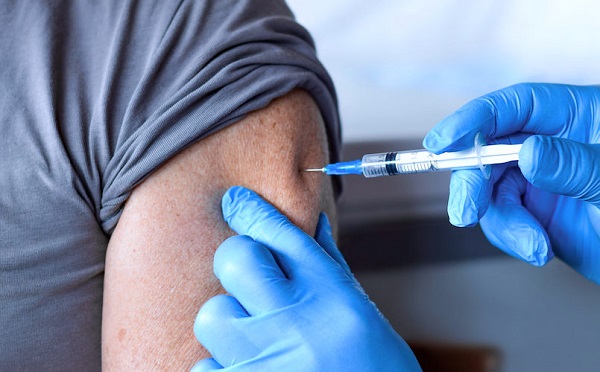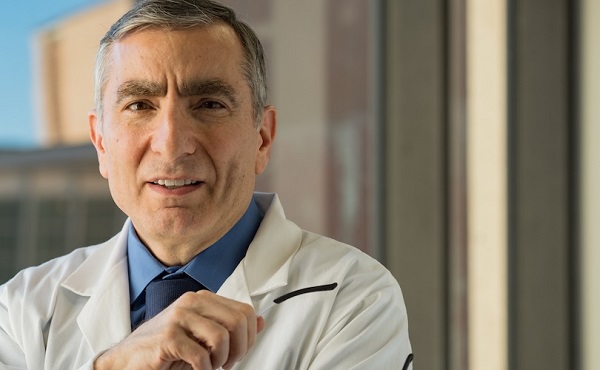MAiD
Canadian man euthanized after COVID shot injuries

From LifeSiteNews
An Ontario man in his late 40s has been euthanized after doctors diagnosed him with ‘post COVID-19 vaccination syndrome’ following three COVID jabs, which caused him to suffer ‘severe functional decline.’
An Ontario man has been granted euthanasia for “post COVID-19 vaccination syndrome.”
According to an October report by the National Post, an anonymous Ontario man in his late 40s has been euthanized after doctors determined his COVID shot injuries qualified him for assisted suicide or “Medical Assistance in Dying” (MAiD) under Canada’s euthanasia regime.
“Amongst his multiple specialists, no unifying diagnosis was confirmed,” the reports issued by a 16-member MAiD death review committee found.
Nevertheless, the doctors “opined that the most reasonable diagnosis for Mr. A’s clinical presentation (severe functional decline) was a post-vaccine syndrome, in keeping with chronic fatigue syndrome.”
The man experienced “suffering and functional decline” following three doses of the experimental COVID shots.
He also suffered from a slew of mental illnesses, including depression, post-traumatic stress disorder, anxiety and personality disorders. He was admitted to the hospital twice “while navigating his physical symptoms” with thoughts of suicide.
He was eventually diagnosed “post COVID-19 vaccination syndrome,” which is not currently include in Canada’s current vaccine reporting system. Notably, Canada’s program to compensate those injured by the so-called “safe and effective” COVID shots has now spent $14 million, but the vast majority of claims remain unpaid.
His death is further complicated by the fact that multiple specialists failed to agree on his diagnosis, with many questioning if his condition met the criteria for an “irremediable” condition, which is required to seek euthanasia in Canada. Many also questioned if his mental health disqualified him from undergoing assisted suicide.
The man’s death is considered “Track 2,” part of a group who are not “terminally ill” and whose natural deaths are not reasonably foreseeable.
Dr. Sonu Gaind, a psychiatrist and professor of medicine at the University of Toronto, revealed that he is troubled “by almost everything in this report.”
“I think we have gone so far over the line with Track 2 that people cannot even see the line that we’ve crossed,” said Gaind.
“It’s pretty clear that some providers are going up to that line, and maybe beyond it,” Gaind said.
As LifeSiteNews previously reported, internal information has revealed that Canadian doctors are questioning the morality of euthanizing vulnerable and impoverished patients who are choosing death because of poverty and loneliness.
During his time in office, Prime Minister Justin Trudeau and his government have worked to expand assisted suicide 13-fold since it was legalized, making Canada’s euthanasia program the fastest growing in the world.
Currently, wait times to receive actual health care in Canada have increased to an average of 27.7 weeks, leading some Canadians to despair and opt for euthanasia instead of waiting for genuine assistance. At the same time, sick and elderly Canadians who have refused to end their lives via “MAiD” have reported being called “selfish” by their providers.
The most recent reports show that euthanasia is the sixth highest cause of death in Canada. However, it was not listed as such in Statistics Canada’s top 10 leading causes of death from 2019 to 2022.
When asked why it was left off the list, the agency said that it records the illnesses that led Canadians to choose to end their lives via euthanasia, not the actual cause of death, as the primary cause of death.
According to Health Canada, in 2022, 13,241 Canadians died by MAiD lethal injections. This accounts for 4.1 percent of all deaths in the country for that year, a 31.2 percent increase from 2021.
Great Reset
Viral TikTok video shows 7-year-old cuddling great-grandfather before he’s euthanized

From LifeSiteNews
Karly Vavra, the little girl’s mother, told People that she chose to share the video in order to honor her grandfather—but also to normalize euthanasia.
A video of a 7-year-old girl sharing a “final cuddle” with her great-grandfather before he is euthanized has gone viral on TikTok, racking up millions of views.
@karlsbergggg Sobbing 😭 #MAID #medicallyassisteddeath #grandpasgirl #greatgrandpa #greatgrandparents
The video shows the child curled up next to an elderly man, sitting straight on the couch, their final moments together captured. “This is my 96 year old grandpa with my 7 year old,” the caption reads. “He’s doing MAID soon. I tried explaining gently to my daughter that this was the last visit she’d have with him. This is what she did the second she walked in. He’s so happy.”
Karly Vavra, the little girl’s mother, told People that she chose to share the video in order to honor her grandfather—but also to normalize euthanasia. “The feeling is very bittersweet,” she said. “I look back with smiles and tears.” She admitted that she knows “my daughter didn’t fully understand these were her last moments with him.”
Her grandfather, who had chosen euthanasia, did understand the gravity of the moment. “My grandpa knew those were his last moments with her,” Vavra said. “Him looking down in that short moment, I believe, was his way of trying to hide emotions as he was a very proud man.” Her grandfather was scheduled to be killed by lethal injection just days later.
READ: Glenn Beck offers to fund life-saving surgery for Canadian woman approved for euthanasia
Vavra says her grandfather was always a favorite of neighborhood children, who were drawn to him. “I am so grateful both my kids got to know him, though, as not many children get [much] time, if any, with a great grandparent,” she said. “My grandpa was honestly the sweetest man. He loved children, gardening, golf, music and was VERY opinionated… Him and my kids were always laughing with each other, and he loved how loud and proud my daughter was! I hope she is strong like he was and always laughs and sees the brighter side.”
Vavra posted the video because she wanted to celebrate her grandfather’s euthanasia. “I posted this because I truly believe MAID can be a wonderful thing,” she told People. “Letting people go the way they want, with dignity, and not suffering… A lot of religions don’t believe in MAID and some comments were more aggressive than others. Seeing how negative some of the responses were made me really want to advocate for the MAID program.”
“Her connection to MAID began long before her own grandparents made their decisions, as she previously worked on a case in British Columbia after she says many of her coworkers opted not to participate,” People reported.
“I am a very open, understanding person and believe in ‘your body your choice’ which is why I volunteered,” she says...This year alone brought unimaginable loss for her family. “My parents and aunt have had a harder time because both their mom and dad decided to do MAID this year, so it’s definitely been a rough year, but we are sticking together as a family and really trying to cherish all our moments together,” Karly shares.
There are over 10,000 comments on Vavra’s TikTok video, many of them expressing horror at the normalization of putting elderly people to sleep like sick household pets.
“I always try to be honest with my children,” Vavra said. “I explained that Big Papa (what my kids called him) was in a lot of pain and that he would be going to meet Big Grandma on Saturday (my grandma also did MAID this year). I explained that a very nice doctor and nurses were coming and they were going to give him some medicine and he would fall into the best sleep ever but forever, and that he wouldn’t be in pain anymore.”
It is notable that despite the irreligious basis of euthanasia, spiritual language is often incorporated into euthanasia conversations in order to soften the reality of what is taking place.
This is a new Canadian reality: Children losing their parents, grandparents, and great-grandparents not to natural death, but to lethal injections. Their goodbyes are defined by moments that do not have to be the last but have been chosen. There could have been more conversations. More cuddles. More love. But there was not—and that was a decision. “Seeing her link arms with him was very touching but of course very painful,” Vavra said. “Both loving each other so much. I wish we could have had him forever.”
They could have had him longer.
International
Trump admin wants to help Canadian woman rethink euthanasia, Glenn Beck says

From LifeSiteNews
Jolene Van Alstine, approved for state-sanctioned euthanasia after enduring long wait times to receive care for a rare parathyroid disease, is in need of a passport to enter the U.S.
Well-known American media personality Glenn Beck says he has been in touch with the U.S. State Department to help a Canadian woman in Saskatchewan reconsider euthanasia after she sought assisted suicide due to long medical wait times to address her health problems.
As reported by LifeSiteNews on Tuesday, Canadian woman Jolene Van Alstine was approved to die by state-sanctioned euthanasia because she has had to endure long wait times to get what she considers to be proper care for a rare parathyroid disease.
Van Alstine’s condition, normocalcemic primary hyperparathyroidism (nPHPT), causes her to experience vomiting, nausea, and bone pain.
Her cause caught the attention of Beck and many other prominent Americans and Canadians on X.
In an update today on X, Beck said, “Jolene does not have a passport to gain legal entry into the U.S., but my team has been in touch with President (Donald) Trump’s State Department.”
“All I can say for now is they are aware of the urgent life-saving need, and we had a very positive call,” he added.
Beck had said before that he was in “contact with Jolene and her husband” and that he had “surgeons who emailed us standing by to help her.”
As of press time, neither the State Department nor other officials have not yet confirmed Beck’s claim that he has been in touch with them.
As a result of Van Alstine’s frustrations with the healthcare system, she applied for Canada’s Medical Assistance in Dying (MAiD) and was approved for January 7.
As reported by LifeSiteNews, over 23,000 Canadians have died while on wait lists for medical care as Prime Minister Mark Carney’s Liberal government is focused on euthanasia expansions.
A new Euthanasia Prevention Coalition report revealed that Canada has euthanized 90,000 people since 2016, the year it was legalized.
As reported by LifeSiteNews recently, a Conservative MP’s private member’s bill that, if passed, would ban euthanasia for people with mental illness received the full support of the Euthanasia Prevention Coalition.
-

 Digital ID19 hours ago
Digital ID19 hours agoCanadian government launches trial version of digital ID for certain licenses, permits
-

 Agriculture21 hours ago
Agriculture21 hours agoEnd Supply Management—For the Sake of Canadian Consumers
-

 Alberta18 hours ago
Alberta18 hours agoAlberta Next Panel calls to reform how Canada works
-

 International13 hours ago
International13 hours agoGeorgia county admits illegally certifying 315k ballots in 2020 presidential election
-

 Business16 hours ago
Business16 hours agoThe “Disruptor-in-Chief” places Canada in the crosshairs
-

 Artificial Intelligence17 hours ago
Artificial Intelligence17 hours agoUK Police Pilot AI System to Track “Suspicious” Driver Journeys
-

 Energy12 hours ago
Energy12 hours ago‘The electric story is over’
-

 International20 hours ago
International20 hours agoWorld-leading biochemist debunks evolutionary theory







